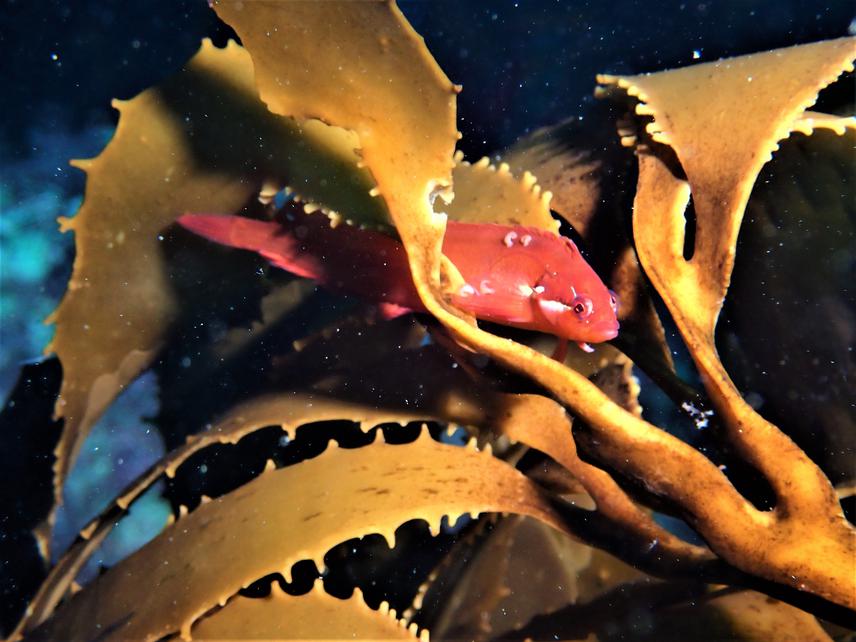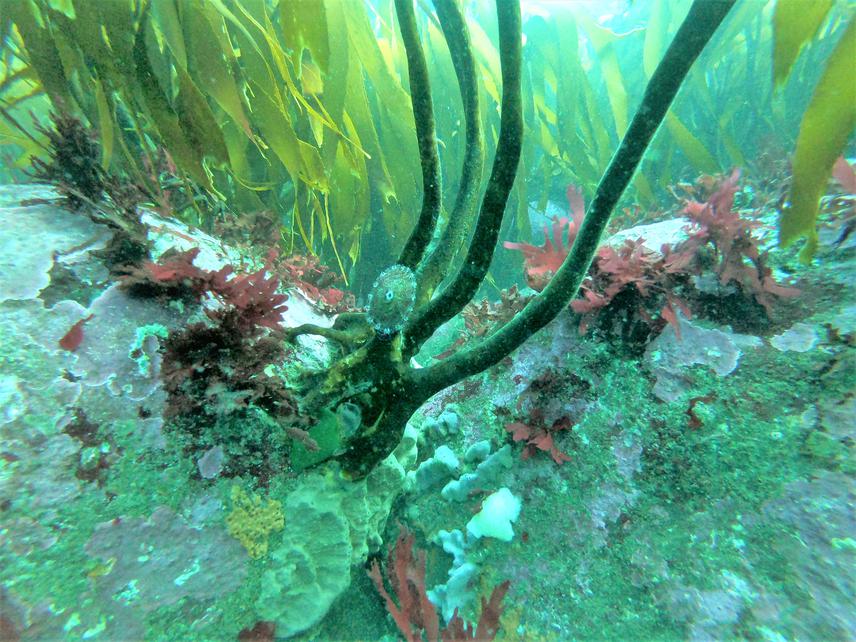Social media video featuring the project.
Southern sealions (Otaria flavescens) swimming with divers in kelp forest at Huiro, Chaihuín, Valdivian Coastal Reserve. Video taken by Simon Gartenstein.
23 Sep 2020 Valdivia, Chile, Central and Latin America Marine | Communities | Fishes | Biodiversity | Habitats | Invertebrates
Effects of Fisheries Management and Habitat Complexity on Size Structure and Function of Marine Communities in Kelp Forests of South-Central Chile
• Describe the effects of habitat complexity on the biodiversity, structure and function of marine assemblages (fish, invertebrates and algae) in kelp forests of Lessonia trabeculata of south-central Chile. This information does not currently exist for this region, so the new data will contribute to a better understanding of ecological function and food web dynamics e.g. predator prey relationships.
• Determine how community structure in the kelp forests are affected by fishing intensity and resource use in managed areas or Territorial User Rights for Fishing (TURF) zones, compared to Open Access non-managed areas.
• Work collaboratively with The Nature Conservancy and the local community (fishing, indigenous and environmental groups) to develop conservation outputs for the region e.g. contribute to an updated conservation plan for the Valdivian coastline and initiate a collaborative resource monitoring program.

Reef fish (Patagonotothen sp.) in kelp forest at Huiro, Chaihuín, Valdivian Coastal Reserve. © Eliseo Fica.
This project will be conducted in the subtidal kelp forests of Lessonia trabeculata on temperate rocky reefs of south-central Chile. The kelp forests of this region are characterized by depths of up to 15 m and a substratum consisting of boulders, large rocks and sand bottom. These three-dimensional habitats provide important food resources, reproduction areas and refuge for a diverse ecosystem of marine mammals, fish, invertebrates, and algae. A number of these species, such as the fish and invertebrates, are data deficient but others have high conservation status such as the endangered marine otter (Lontra felina), and the near endangered Chilean dolphin (Cephalorhynchus eutropia). Furthermore, many species are commercially important and are directly managed under the Territorial User Rights for Fishing (TURFs) system, where local fishing communities have exclusive rights to the marine resources in their local areas. Unlike the central to northern regions of Chile, where many of the kelp forests have been heavily impacted from unrestricted harvesting and unsustainable fishing, the kelp forests of the south-central region receive less fishing pressure and are only harvested on a minor scale. In this region of Chile, the ecology of the kelp forests and impacts from the small-scale fishing fleets are poorly understood.

Kelp forest in Huiro, Chaihuín, Valdivian Coastal Reserve. © Simon Gartenstein.
Based on identified knowledge gaps and the necessity for conservation of kelp forest habitats, this project will do the following. Firstly, describe the biodiversity, community structure and function of kelp forest ecosystems, and secondly, determine the impacts of commercial fishing. Because fishing targets and removes larger species, which can affect the function of the entire food web, an analysis of the size-structure of fish and invertebrate assemblages will be done. Understanding these processes is imperative for effective ecosystem management and conservation, which requires a clear understanding of community structure and function.
The results from this project will generate important new information that will contribute to a better understanding of the kelp forest ecosystem along the Valdivian coastline of south-central Chile. In collaboration with The Nature Conservancy (TNC), the local fishing community, and environmental groups, the data will be included in a revised conservation plan that will drive the conservation objectives of multiple stakeholders in the region.
Social media video featuring the project.
Southern sealions (Otaria flavescens) swimming with divers in kelp forest at Huiro, Chaihuín, Valdivian Coastal Reserve. Video taken by Simon Gartenstein.